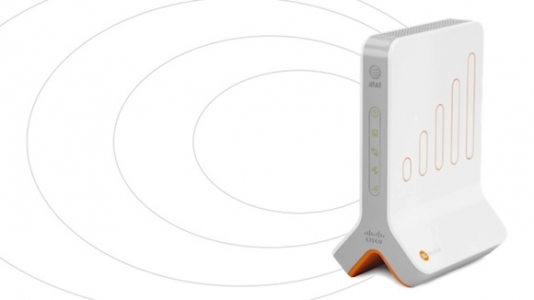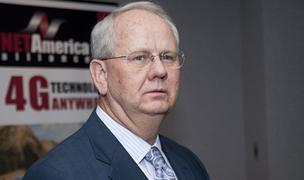 In the run up to the LTE Asia conference we bring you this interview with Aricent Group’s Sanjiv Kapur, director, product management, and R Ezhirpavai, assistant vice president – technology.
In the run up to the LTE Asia conference we bring you this interview with Aricent Group’s Sanjiv Kapur, director, product management, and R Ezhirpavai, assistant vice president – technology.
Aricent Group is a global innovation and technology services company that helps clients to imagine, commercialise, and evolve products and services for the connected world. It is an expert on LTE femtocells, and the deployment of rural and public safety networks.
How will CDMA be incorporated in next generation femtocells?
LTE and other next generation telecommunication technologies will need to co-exist with older technologies such as UMTS, CDMA and GERAN, etc. Deploying stand-alone solutions supporting individual technologies can be prohibitively expensive for both operators and subscribers.
Multi-mode femtocells – capable of supporting multiple technologies simultaneously – provide a solution for deploying these technologies to ensure that expenses are kept under control. These femtocells will provide support for LTE and one or more older technologies based on the operator’s requirements.
How can interference be reduced when macrocells and femtocells need to use the same carrier?
A: Various standard bodies have laid down detailed specifications for deployments of small cell solutions that minimize interference between base stations of different form factors.
The amount of power delivered to each femtocell determines its coverage area. Femtocell deployments can be designed to eliminate coverage holes in the macro cell UE coverage area.
Are there any standardization efforts on SON for LTE femtocells?
A: The standards for self optimizing networks (SON) are evolving and there is very little guidance available today on actual implementation. There is significant room for differentiation between vendors especially in case of small cell solutions such as femtocells.
Would LTE femtocell be marketed as operator subsidized?
Most likely! The operator today subsidizes most femtocell deployments. Operators are under huge pressure to reduce the cost per bit of providing data services and macro cells deployments are complex and expensive.
Femtocells provide huge benefits to operators, not just in terms of saving deployment and operational expenses, but also reducing the load on core macro networks via offloading. Subsidizing the cost of femtocell deployment also helps in improving customer loyalty, thus enhancing the overall user experience.
What are the choices for backhaul? Which is preferred and why? How do you solve the backhaul challenge for wide spread deployment of femtocells?
- For Residential Femtocell, typically xDSL or Cable backhaul is used.
- For Enterprise Femtocell, the SONET or ATM backhaul (exists on Enterprise) is used.
There are many countries wanting 700 MHz for commercial networks. Do you think this would affect public safety deployments which also require same spectrum?
Commercial providers want 700 MHz for good in-building penetration. In fact recently a provider was asked to move away from LTE only because the government of that country was not ready to offer 700MHz for commercial usage. Operators accrue huge cost savings when using this spectrum because the number of eNodebs needed in a network is minimized.
On other hand where there are commercial LTE deployments in this band, a different class of spectrum is being used for public safety as compared to commercial deployments.
How easy is it to integrate Aricent solution to any customer’s specialized applications?
Aricent’s EPC offering complies with standard 3GPP specifications for all its external interfaces enabling quick interworking with customer’s voice/media/data IMS/PMR applications. It also has well defined interfaces to integrate with external DPI engines, proprietary algorithms and external management frameworks.
Why do you think, 3G networks have not been able to capture the rural networks and why do you think LTE would not undergo the same problem in rural markets?
3G data networks lack the level of latency provided by LTE networks. Hence with 3G data networks, providing voice support is very difficult. So in order to support both voice and data, one needs both 3G data and CS networks. This brings in additional network node requirements. Moreover since CS networks are not “all IP” they require higher level of maintenance and redundancy path which is highly complex. Thus cost of laying down 3G networks as primary network for rural areas is very costly. With LTE networks, these issues are not present. Hence we feel LTE networks are more suitable for rural environment.
Are there any successful/profitable business models that leverage LTE for public safety applications that you are aware of?
There are many successful public safety applications that we are aware of. These are very proprietary to specific deployments. These applications help in services meant for public safety for e.g., in case of fire, informing the firemen, in case of defense, informing the field personnel by general in command, and providing information from field. Details of the applications cannot be revealed, but many multi-media applications are possible.
What spectrum band is likely to be used for Public Safety LTE outside the US? E.g. in the Middle East or Asia Pacific Region?
We feel that in Asia pacific region, the 700MHz band is going to be used for public safety usage specifically in India.
Is there support of LTE for public safety markets outside of North America similar to the APCO support?
Yes, many countries are planning to use LTE for public safety. Many European countries and developing countries in Asia-pacific are considering LTE for public safety, mainly due to the advantages that LTE offers for this market.
Is LTE’s inherent security as secure as today’s Public Safety Radio networks like TETRA ?
Today’s Public safety networks offer additional security over and above what the 3G networks offer. In similar manner to offer additional security for LTE, operators are planning to use additional security mechanism, like separate frequency band, additional algorithms for ciphering and authentication etc., to offer better security in public safety networks. Application level security is additional functionality that is being considered by public safety vendors.
With current Femto & Nano cells market, how do you see LTE being used instead of already established 2G/3G Femto/Nano cells?
Femto/Nano cells help in additional radio coverage. With LTE it is not only solves the cell coverage isssue, but gives lot of additional functionality like better latency, better bandwidth, flatter architecture and single network serving both voice and data. Thus we see a definite market for LTE which cannot be fulfilled by 3G/2G femto and nano cells.
Which frequencies are optimum for the LTE deployment in rural or sparsely populated areas?
For rural deployment the lower frequency bands (700 MHz) is best suited, for better penetration and wider area coverage.
What is the overall cost for the deployment of LTE in rural or sparsely populated areas? `What bandwidth size is required?
Bandwidth size depends on the number of users and the bandwidth usage. More the usage more is the bandwidth required. Overall cost depends on multiple factors, like number of users, data throughput, area covered, redundancy requirement and alternate paths etc.
What are the challenges for core hosting in case of rural operators?
There are multiple challenges such as maintenance, remote monitoring, remote upgrades, high redundancy, finding alternate paths and establishing warning systems etc.
Does LTE for public safety support multicast services?
LTE specifications define multi-cast services which can be used for public safety as well.
Aricent will be exhibiting at the LTE Asia 2012 conference taking place NEXT WEEK on the 18-19 September 2012 at the Marina Bay Sands, Singapore. Click here to register your interest.



